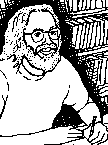
ECUADOR
COMPETITION IN INDIAN ARTS AND ARTS USING INDIAN MOTIVES
The Central Council of the Ecuadorean Federation of Indians which met in Quito November 11, 1945, among various resolutions agreed upon, passed the following:
Considering:
That it is necessary to stipulate the development of the handicraft arts practised by Ecuadorean Indians, among which are a rich and beautiful variety of weavings using every sort of material, objects of wood, of clay, etc., since this will contribute toward raising the economic level of the Indian and the production of the country;
That besides the objects which the Indians produce, there are other popular arts carried on by persons not belonging to the indigenous races but using Indian motives in their work; and these also are invested with great national importance;
That the plastic art with Indian influence, that is to say the art achieved by painters, draftsmen, sculptors who draw their inspiration from the Indian, constitutes one of the valued treasures of our national art;
That the development of the handicraft arts and plastic arts of the Indian and those inspired by the Indian will contribute toward attracting tourists;
It is agreed:
To convene on April 19, 1946, "Inter-American Indian Day", competitive expositions of handicraft arts produced by Indian or using Indian motives, and of plastic arts inspired by the Indian the judging to be on the basis indicated herewith.
To ask the Government, the House of Culture, the Indian Institute of Ecuador, the artists and artisans inspired by the Indian motive, the cultural institutions of the country, the municipalities, foreign institutions concerned with the Indian, 'the representatives of other countries accredited to Ecuador, all labor organizations and especially those made up of Indians, the Banco de Fomento and everyone interested in the Indian and in national progress to cooperate in making a success of the competitions listed.
Quito, November 11, 1945. (Signed) Dolores Cacuango, General Secretary of the Ecuadorean Federation of Indians. Luis E. Alvaro, Secretary of the Central Committee in Defense of the Indians. Ricardo A. Paredes, Acting Deputy for the Ecuadorean Indians. Diógenes Paredes, Chairman of the Contest Committee of the Indian Federation.
Competition in Handicraft and Plastic Arts Produced or Inspired by Indians, Promoted by the Ecuadorean Federation of Indians for April 19, 1946.
The Ecuadorean Federation of Indians (F. E. I.), deeply interested in developing in Ecuador the handicraft arts of the Indians and handicraft arts which draw their inspiration from Indian motives, thus providing work for the people, increasing the public wealth and the abundance of national art, and providing greater, attractions for tourists, invites all who cultivate these arts to take part in this competition. The contest will be held April 19, 1946, in the city of Quito, capital of the Republic of Ecuador.
The basis for judging in the competition covering Indian handicraft arts, handicraft arts with Indian motives and plastic arts, will be as follows:
1). The Contest comprises three sections: a) handicraft arts produced by Indians, b) handicraft arts using Indian motives; c) plastic arts inspired by the Indian.
2) The Indian handicraft arts are those practised by the Indians of Ecuador. These embrace: a) woolen clothing: ponchos, macanas, rebozos, fachalinas, tupullinas, anacos, scarves, sashes, belts; b) blankets of wool, flannel bayetas; c) woolen cashmeres; d) woolen carpets; e) woolen hats; f) cotton cloth, and articles of clothing; g) fancy weaving, knitting and embroideries; h) sandals; i) woven goods of hemp, of cords; woven reed-work; k) baskets; l) horsehair weaving; 11) feather ornaments; m) damajahua; n) plates, cups, pondos, flowerpot, pitchers and so forth of pottery; ñ) toys and ornaments of clay; o) musical instruments of clay; p) grinding stones (cutanarurni), mortars (uchurumi) ; q) bone implements and ornaments; r) sheepskin jackets, footgear, bags, straps, lassos; rr) painted trays, spoons, plates; s) painted and decorated gourds for drinking mate; t) wooden work implements; u) wooden furniture; y) wooden ornaments; w) musical instruments; x) wooden weapons; y) paintings and drawings; z) sculpture .
3). The contest in handicraft arts of Indian character comprises classes of work similar to those enumerated in the second article, but produced by persons not belonging to the indigenous races; however using motives inspired by the Indians.
4). The contest in the plastic arts embraces painting, sculpture, drawing inspired by the Indians and executed by persons not belonging to the indigenous races.
5). A prize of cash or articles will be awarded for the best work in each group of objects listed by letter in Paragraph No 2, as selected by the Jury for that class. Diplomas of honor will be awarded to the exhibitors whose entries follow closely in merit the one awarded the prize. Prizes will he awarded after the close of the Exposition.
6). The Jury will be composed of one artist named by the Ecuadorean Federation, of Indians, one artist named by the House of Culture, one artist named by the National School of Fine Arts, one teacher of popular arts from the Central Technical School, and the Acting Deputy for the Indians.
7). The Exposition will be open April 19-30, 1946.
8). Transportation both ways of articles entered in the Exposition will be at the expense of the Indian Federation, and without cost to the exhibitors.
9) Articles to be entered must be delivered, at the latest, April 10, 1946.
Source: "Competition in Indian arts and arts using Indian motives," Boletín Indigenista 6, no. 1 (March 1946): 28-33.
| e-archivo ecuatoriano | Marc Becker's Home Page | marc@yachana.org |